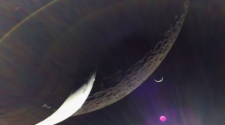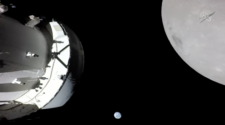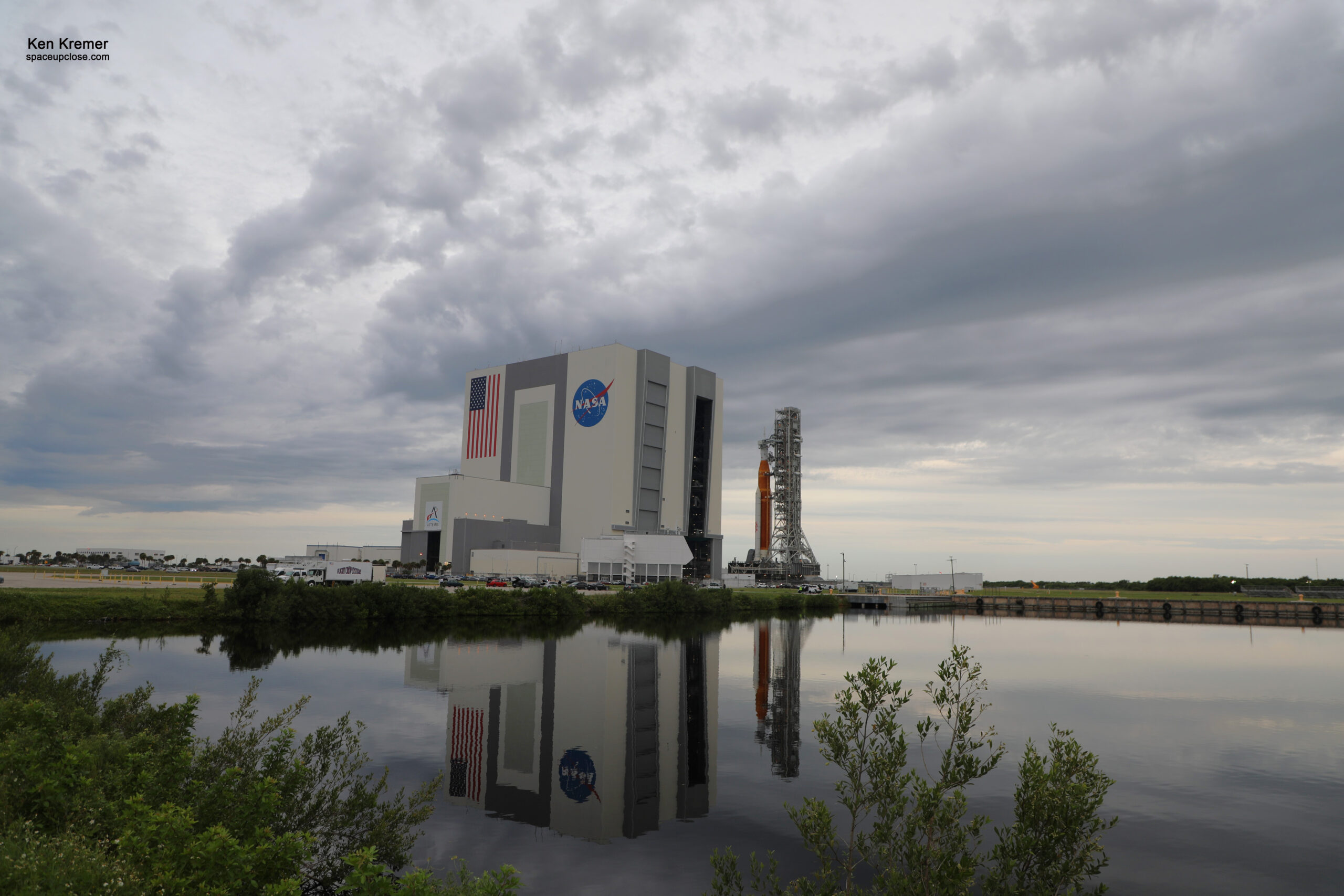
NASA is targeting Monday, Nov. 14 as the date for the next launch attempt of the Artemis I mission with a nighttime liftoff of the Space Launch System (SLS) rocket carrying the Orion spacecraft on a test flight around the Moon and back.
The late-night launch window on Nov. 14 opens at 12:07 a.m. EST and extends for 69 minutes until 1:16 a.m. EST.
NASA’s Artemis I flight test is the first integrated test of the agency’s deep space exploration systems: the Orion spacecraft, SLS rocket, and supporting ground systems.
The test flight rocket had remained on the pad at Launch Complex 39B following a pair of scrubs from launch attempts on Aug. 29 and Sept. 3.
NASA was forced to wave off the last Artemis 1 launch attempt period in late September and early October. The 32-story tall stack was rolled back to the VAB processing hangar for protective shelter on Sept. 27 in the face of the impending threat from monster Hurricane Ian as it was approaching the Florida peninsula. Ian made landfall on the western side of the state, bringing atrocious weather to the Space Coast mere hours after the rocket was secured indoors.
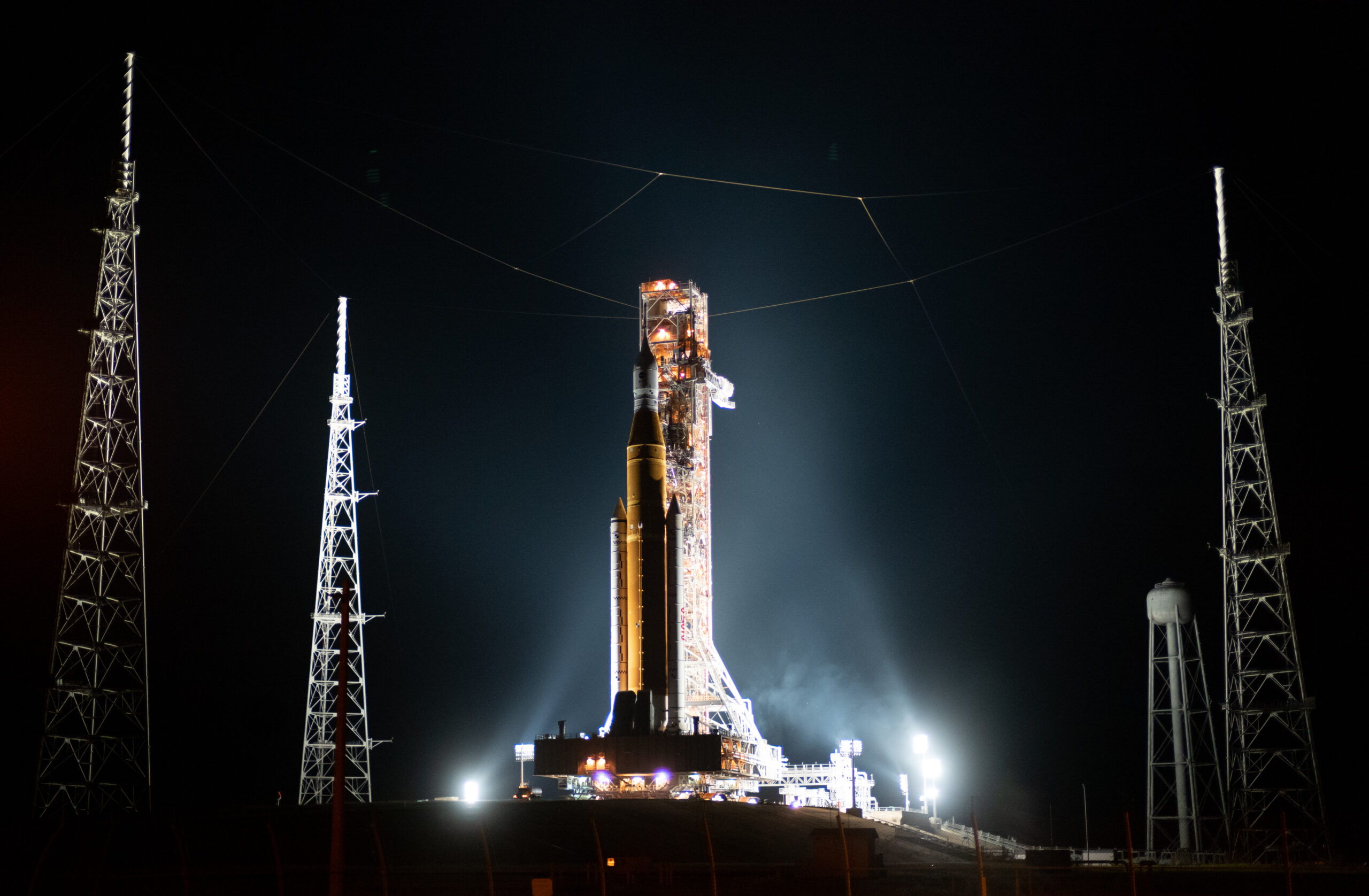
Ultimately Hurricane Ian caused more than 100 deaths and widespread destruction and flooding across a wide swath of the state as it hit the southwest coastline near Fort Meyers and continued on a northeasterly track across much of central Florida to the east coast, including vast regions around Orlando, the Space Coast, Daytona Beach and beyond. However, post-storm inspections confirmed the SLS rocket and Orion crew capsule remained unscathed during the storm.
NASA had been hoping to launch Artemis 1 on Oct. 2 after successfully completing the critical cryogenic tanking test at the launchpad on Wednesday, Sept. 21. The cryo loading test was run to verify whether repairs carried out at the pad had actually fixed the dangerous hydrogen leak that scrubbed the prior launch attempt on Sept. 3 rather than doing that work after rolling the integrated SLS and Orion stack back inside the Vehicle Assembly Building (VAB). Another significant hydrogen leak was encountered near the start of the loading process for the test, however, engineers were able to resolve the issue and complete the test.
“Inspections and analyses have confirmed minimal work is required to prepare the rocket and spacecraft to roll out to Launch Pad 39B at Kennedy Space Center in Florida following the rollback due to Hurricane Ian” said NASA. “Teams will perform standard maintenance to repair minor damage to the foam and cork on the thermal protection system and recharge or replace batteries on the rocket, several secondary payloads, and the flight termination system.”
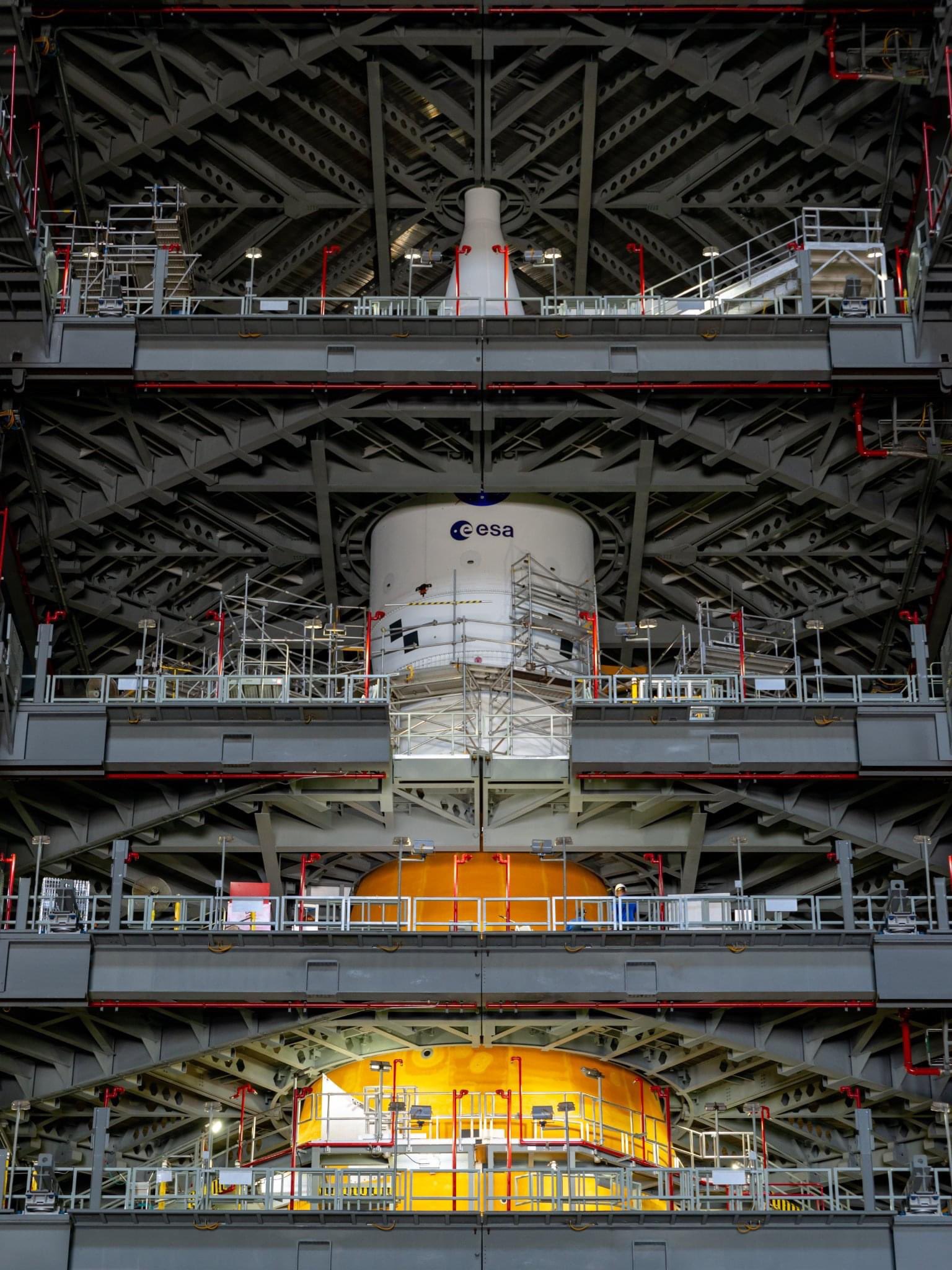
The Artemis 1 stack of SLS and Orion could roll out to launch pad 39B once again as early as Friday, Nov. 4.
NASA will make a decision after completing the repair and refurbishment work and FTS battery recheck and recharge work closer to the rollout date.
“Teams will replace the flight batteries for the interim cryogenic propulsion stage and the boosters, as well as the batteries for the flight termination system in the boosters and core stage,” said NASA. “Work will also include charging the CubeSats that are equipped to be re-charged and have elected to do so. Inside Orion, work will include replenishing the specimens and batteries for the biology investigations riding within the capsule, as well as recharging the batteries associated with the crew seat accelerometers and space radiation experiments.”
Besides the upcoming Nov. 14 attempt, backup launch opportunities are available on Wednesday, Nov. 16, at 1:04 a.m. and Saturday, Nov. 19, at 1:45 a.m., which are both two-hour launch windows.
If Artemis 1 does launch on Nov. 14 it would result in a mission duration of about 25-and-a-half days, with a splashdown in the Pacific Ocean on Friday, Dec. 9.
The first available daylight launch window is not until Nov. 22 at 7:06 a.m. EST.

